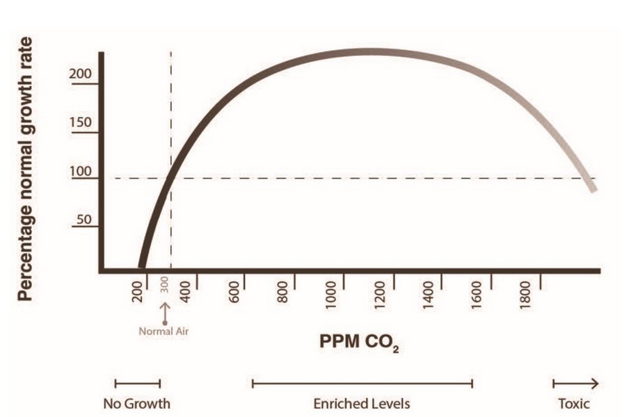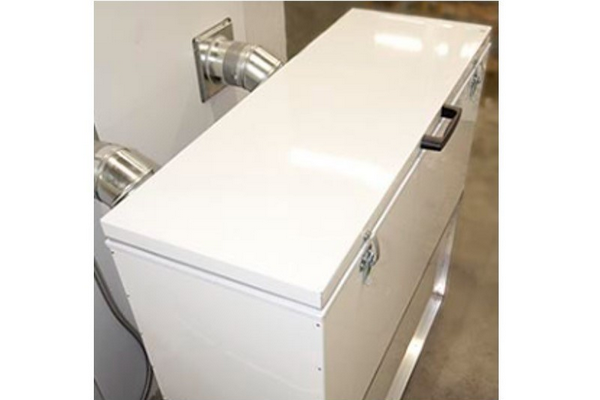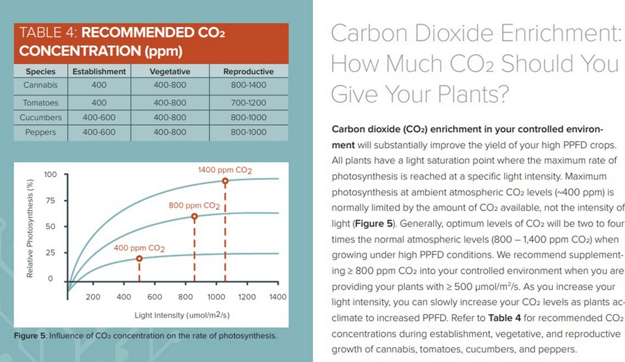Effective environmental control in plant growth chambers is essential for scientists to mimic a wide range of climatic conditions and advance research in areas such as plant biology, genetics, and agricultural sciences.
Carbon dioxide (CO2) management is particularly crucial among the various factors that can influence plant growth. Understanding and maintaining appropriate CO2 levels can increase plant growth and play an important part in research outcomes, while inadequate CO2 control can hinder plant development and confound findings if its role is not understood.
In this Insight, the following is explored: the importance of CO2 control in plant growth chambers, best practices for managing CO2, and specific ways these practices contribute to healthier plants and better plant research. By understanding and controlling for CO2, growers, and researchers can better understand their controlled growth environment as well as ensure optimal plant growth and maximize the efficiency of their operations.
Higher CO2 concentrations enhance photosynthetic rates, leading to more vigorous plant growth. That said, it is crucial to maintain CO2 levels within an optimal range—too little CO2 restricts photosynthesis, and too much can be wasteful and potentially harmful.
Managing CO2 levels in plant growth chambers ensures that plants have the right amount at all times, promoting maximum photosynthetic efficiency and resulting in healthier plants.
The Role of CO2 in Plant Growth
Carbon dioxide (CO2) is essential for photosynthesis, the process by which plants convert light energy into chemical energy. During photosynthesis, plants absorb CO2 from the air and, with sunlight and water, produce glucose for energy and release oxygen as a byproduct.
During daylight hours, plants take in CO2 through tiny openings in their leaves called stomata, combining it with water and sunlight in the chloroplasts to produce glucose and oxygen. At night, without sunlight, plants switch to respiration, breaking down the glucose to release energy, and in the process, they release CO2 back into the atmosphere and take in oxygen.
Higher CO2 concentrations enhance photosynthetic rates, leading to more vigorous plant growth. That said, it is crucial to maintain CO2 levels within an optimal range—too little CO2 restricts photosynthesis, and too much can be wasteful and potentially harmful.
Managing CO2 levels in plant growth chambers ensures that plants have the right amount at all times, promoting maximum photosynthetic efficiency and resulting in healthier plants.
Ambient CO2 Levels and Optimal Plant Growth
In natural outdoor environments, the ambient CO2 level is typically around 350 parts per million (ppm). While plants grow at this concentration, it isn't optimal for maximizing photosynthetic potential.
Increasing CO2 levels in plant growth chambers to about 1000 ppm enables photosynthesis to happen at a higher efficiency so that plants can produce more glucose and grow faster.
Increased CO2 levels in plant growth chambers also lead to increased biomass, improved health, and greater plant productivity. CO2 levels maintained at 1000 ppm help to achieve vigorous growth—particularly beneficial for production, where maximizing yield and plant health are both top priorities.
It's important to note, however, that while increasing plant growth chamber CO2 levels to 1000 ppm enhances growth, enrichment beyond this point doesn't necessarily result in additional benefits. CO2 levels above 2000 ppm can lead to diminishing returns and be toxic to plants, as demonstrated in the graph below.

Managing CO2 Levels in Plant Growth Chambers
In a closed plant growth chamber, CO2 levels are not naturally regulated by the external environment, leading to distinct fluctuations during day and night cycles:
- At night, plants switch to respiration when photosynthesis ceases due to an absence of light. During this process, they release CO2 and consume oxygen, causing a buildup of CO2 that can increase the concentration within the chamber if not managed properly.
- During daylight hours, plants take in CO2 for photosynthesis, converting it into glucose and oxygen. This process can rapidly deplete the available CO2 in the chamber, potentially dropping levels below optimal concentrations if additional CO2 is not supplied.
To ensure CO2 levels remain at the optimal range for plant growth, CO2 tanks can be used to introduce controlled amounts of CO2 into the chamber during the day. This ensures that as plants consume CO2 for photosynthesis, there is a continuous supply to maintain optimal levels. Tanks are typically equipped with regulators and timers to precisely control the CO2 flow, ensuring that levels stay around the ideal 1000 ppm mark.

At night, to prevent excessive buildup of CO2 from respiration, dampers can be used to allow fresh air into the chamber. These dampers automatically open when CO2 levels exceed a certain threshold, introducing fresh air to dilute CO2 concentration and bring it back to optimal levels. This ensures that CO2 levels do not rise too high, which could be detrimental to plant health.
While this Insight focuses on CO2 levels, it's important to note that plants too have a light saturation point where the maximum rate of photosynthesis is reached at a specific light intensity. This may vary, as in the chart below for different stages of plant growth:

Practical and Safety Considerations for CO2 Management
In addition to optimizing plant growth, maintaining appropriate plant growth chamber CO2 levels has critical implications for operational efficiency and user safety.
For example, maintaining appropriate CO2 levels can lead to plant growth efficiency that drives better resource use and lower overall emissions associated with plant growth chamber operations. This aligns with broader environmental goals by minimizing waste and enhancing sustainability.
Cost considerations also play a significant role in CO2 management. Over-enrichment of CO2 wastes resources and can incur additional costs without corresponding benefits. Keeping CO2 levels within the optimal range helps to minimize expenses without compromising plant development.
As mentioned, safety is paramount in managing CO2 levels. The recommended safe CO2 concentration for plant growth chambers is between 1000 and 1200 ppm. Exceeding this range can pose health risks to personnel working in or around chambers.
To ensure safe working conditions, organizations should employ CO2 monitoring systems and alarms that can detect elevated CO2 levels and quickly provide alerts to prevent hazardous exposure.
In Conclusion
Maintaining optimal plant growth chamber CO2 levels is an important aspect of controlled environment-based research and plant production. It provides multi-pronged advantages—facilitating healthy and productive plant development, optimizing resource use, and ensuring operational safety.
By carefully monitoring and adjusting CO2 levels, considering them alongside other key growth factors, and adhering to safety protocols, researchers and growers can have control over a broader set of growth parameters. They can also drive more sustainable operations, aligning best-practice research with environmental stewardship to contribute to a more resilient, efficient agricultural future.
For more information:
Conviron
www.conviron.com
